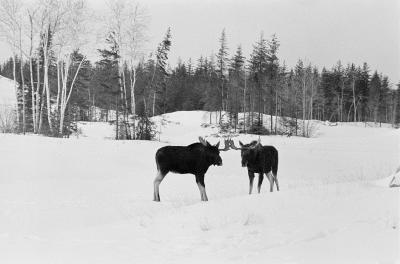
Engine block heaters date back to about 1940 and the garage of a man named Andrew Freeman. Freeman used some spare tubing and a heating element from an old iron to create a "head bolt heater" for his Model A Ford. Decades later and you'll be hard-pressed to find a head bolt heater for your car, but you'll never be short of options when it comes to keeping your vehicle's motor comfortable in the dead of winter.
Dipstick block heaters are the simplest type, and will suffice for most situations. A dipstick heater is simply a replacement dipstick with a heating element on the end that directly heats the oil. While dipstick heaters only produce about 90 watts of power, that's enough to keep most engines from freezing tight enough to inhibit starting. Dipstick heaters are relatively inexpensive, relatively universal and install in literally seconds. The down-side is that a dipstick heater will only provide enough heat to ease starting, and it will take some time to warm an ice-cold engine.
Block heaters either bolt onto the engine block or cling to it using powerful magnets. Block heaters aren't quite as efficient as freeze plug heaters, but they are easier to install and remove. Power output ranges from between 300 and 500 watts, but that number is a bit deceptive; because the heater is external and heats the metal engine block, a certain amount of its heat output will go to waste instead of into the engine's coolant. Magnetic block heaters are far easier to install than bolt-on heaters, but they're not as efficient and won't stick to an aluminum engine block.
The freeze plug heaters are by far the most effective and efficient type. A freeze plug heater installs in place of one of your engine block's freeze plugs; a heating element extending from the plug into the block heats coolant directly. Heat convection circulates the fluid through the engine and radiator, keeping everything nice and toasty. Freeze plugs have two major drawbacks: They're difficult and expensive to install if you have a mechanic do it, and may blow out under high coolant temperatures or leak around the seal.
This type of heater installs in-line in either of the two radiator hoses. They're easy to install, only slightly less effective than the freeze plug heater and are far less likely to leak or fail. Coolant heaters may be either static elements that circulate fluid through heat convection, or the may utilize an electric pump to forcibly circulate through the engine. The latter type is best -- particularly when installed in the lower radiator hose -- as the engine's thermostat will hinder water movement through the system. A pump-type heater will add a bit of pressure to the arrangement to encourage fluid flow.